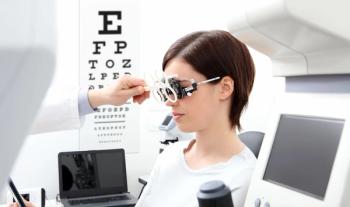
- March/April digital edition 2025
- Volume 17
- Issue 02
What do you say when your best friend asks for dry eye advice?
When her friend began experiencing dry eye symptoms while undergoing chemotherapy, Katherine Mastrota, OD, MS, FAAO, Dipl ABO, found herself in a unique position to provide specialized advice.
I have spent a good part of my career focused on dry eye and ocular surface disease. I believe that I have a good grasp of current diagnostic and management strategies for patients who are clinically and symptomatically affected by alterations/dysfunction of the ocular surface.
Recently, the expertise I have gained in my career took a turn into my personal life. This year, one of my longest and best friends, Karen, was diagnosed with a cancerous lesion. The treatment plan was comprehensive and included infusion chemotherapy, surgery, and radiation.
Karen, an executive vice president in the health care space, was thorough in her research regarding her oncologist’s road map to being cancer free. Naturally, the risks, benefits, and rewards of management were weighed and acknowledged by a second opinion. In her research and in an effort to blunt some of the adverse effects of cytotoxic chemotherapy agents (most notably hair loss), Karen elected to proceed with “cold capping.” To cold cap, the patient wears a cooling cap or device on the scalp before, during, and after chemotherapy treatments. The cooling effect constricts blood vessels in the scalp, which reduces blood flow and minimizes the exposure of hair follicles to the chemotherapy drugs, and may prevent hair loss.
Well into her infusion therapy, Karen called to ask my advice for her eyes, which had become dry and irritated. These were new sensations for Karen, who had never worn contact lenses or experienced chronic eye discomfort. Of note, although Karen retained most of her hair, her eyebrows and eyelashes were lost.
Besides helping to prevent foreign bodies from entering the eye, recall that our eyelashes help direct air currents away from the ocular surface, limiting surface desiccation.1 Was the loss of Karen’s eyelashes the cause or a contributor to her dry eye concerns? Did chemotherapy precipitate something beyond the obvious?
Research demonstrates that many patients undergoing chemotherapy (for a variety of malignancies) will experience dry eye symptoms that may be related to identifiable corneal changes induced by the cytotoxic therapeutic agent.2
Corneal confocal microscopy has identified that antineoplastic drugs negatively affect the corneal subbasal nerve plexus (thinner and reduced number of nerves). Additionally, corneal alterations secondary to chemotherapy, particularly microcytic-like epithelial changes induced by biological drugs and antibody-drug conjugates, are recognized as chemotherapy-induced corneal toxicity.3
Renowned cancer care hospital Memorial Sloan Kettering Cancer Center in New York, New York, prepares patients undergoing certain types of chemotherapy with ocular therapy to reduce the onset or worsening of dry eye secondary to treatment. Preventive/therapeutic management to reduce ocular adverse effects of cytotoxic agents can include cooling masks or ice bags on the eye/adnexal area before, during, and after drug infusions; brimonidine drops to vasoconstrict ocular blood vessels; a topical steroid; and lubricating drops.
Adverse anterior, posterior, and other adverse ocular effects of the variety of classes of chemotherapy drugs are multiple and can manifest in epiphora, conjunctivitis, uveitis, visual field defects, cataracts, optic neuropathy, corneal erosions, and retinopathy, among other conditions.4
The treatment?
Because this was the first time in all my years of friendship with Karen that she reported significant ocular dryness, I initiated a palliative regimen consisting of preservative‑free artificial tears, eyelid occlusion during naps and at bedtime, local ambient humidification, and protective eyewear as needed both indoors and outdoors. Since I was unable to perform an in‑office examination, I recommended that she follow up with her own optometrist to rule out any chemotherapy‑related ocular changes and keep her oncologist informed of her symptoms. Fortunately, this initial therapy carried her comfortably through the remainder of her oncology treatment.
Now that her chemotherapy has concluded, Karen’s eyelashes and eyebrows have fully regenerated and her dryness symptoms have markedly improved. It was deeply gratifying to be able to support her in this way, and I remain grateful to all the researchers and clinicians who continue to advance our treatment options for dry eye patients.
Ocular toxicity induced by chemotherapeutic agents is often underestimated. It would be a service to our patients to conduct comprehensive patient history updates to educate patients about ocular effects prior to, during, or after cancer treatment. I certainly was remiss in this regard. However, going forward, I will keep this lesson top of mind so that patients (and friends) are well-informed and prepared for ocular adverse effects of chemotherapy.
References:
Amador GJ, Mao W, DeMercurio P, et al. Eyelashes divert airflow to protect the eye. J R Soc Interface. 2015;12(105):20141294. doi:10.1098/rsif.2014.1294
Ma J, Pazo EE, Zou Z, Jin F. Prevalence of symptomatic dry eye in breast cancer patients undergoing systemic adjuvant treatment: a cross-sectional study. Breast. 2020;53:164-171. doi:10.1016/j.breast.2020.07.009
Cosmo E, Midena G, Parrozzani R, Midena E. Chemotherapy induced corneal changes assessed by corneal confocal microscopy: a review. Diagnostics (Basel). 2024;14(21):2399. doi:10.3390/diagnostics14212399
Stoicescu EA, Iancu RC, Popa Cherecheanu A, Iancu G. Ocular adverse effects of anti-cancer chemotherapy. J Med Life. 2023;16(6):818-821. doi:10.25122/jml-2023-0041
Articles in this issue
7 months ago
A closer look at periorbital allergic dermatitis7 months ago
The contact lens follow-up factor7 months ago
The value of innovation in controlling myopia7 months ago
Addressing the root cause of dry eye diseaseNewsletter
Want more insights like this? Subscribe to Optometry Times and get clinical pearls and practice tips delivered straight to your inbox.


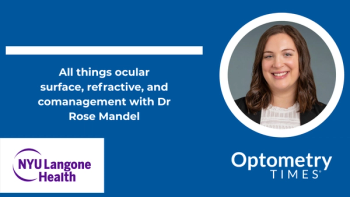
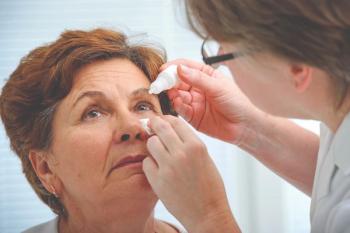
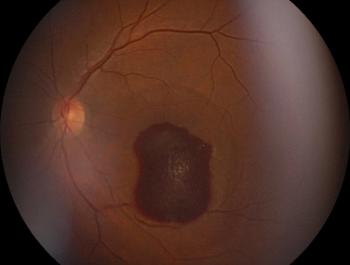
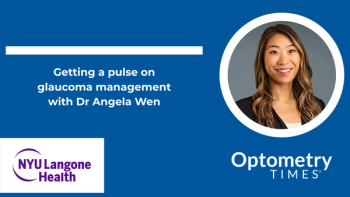














































.png)


